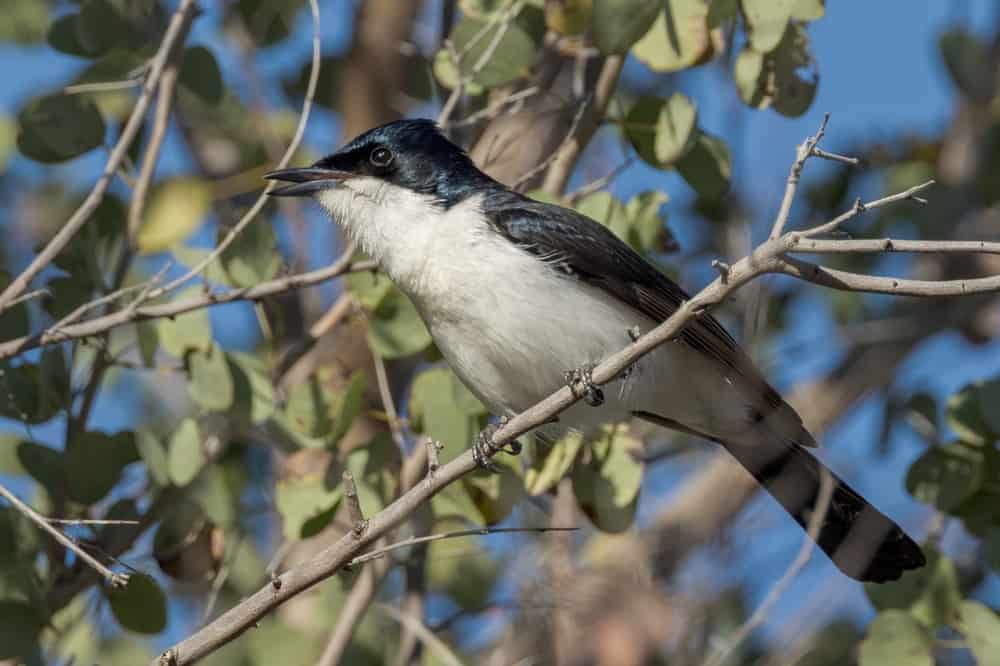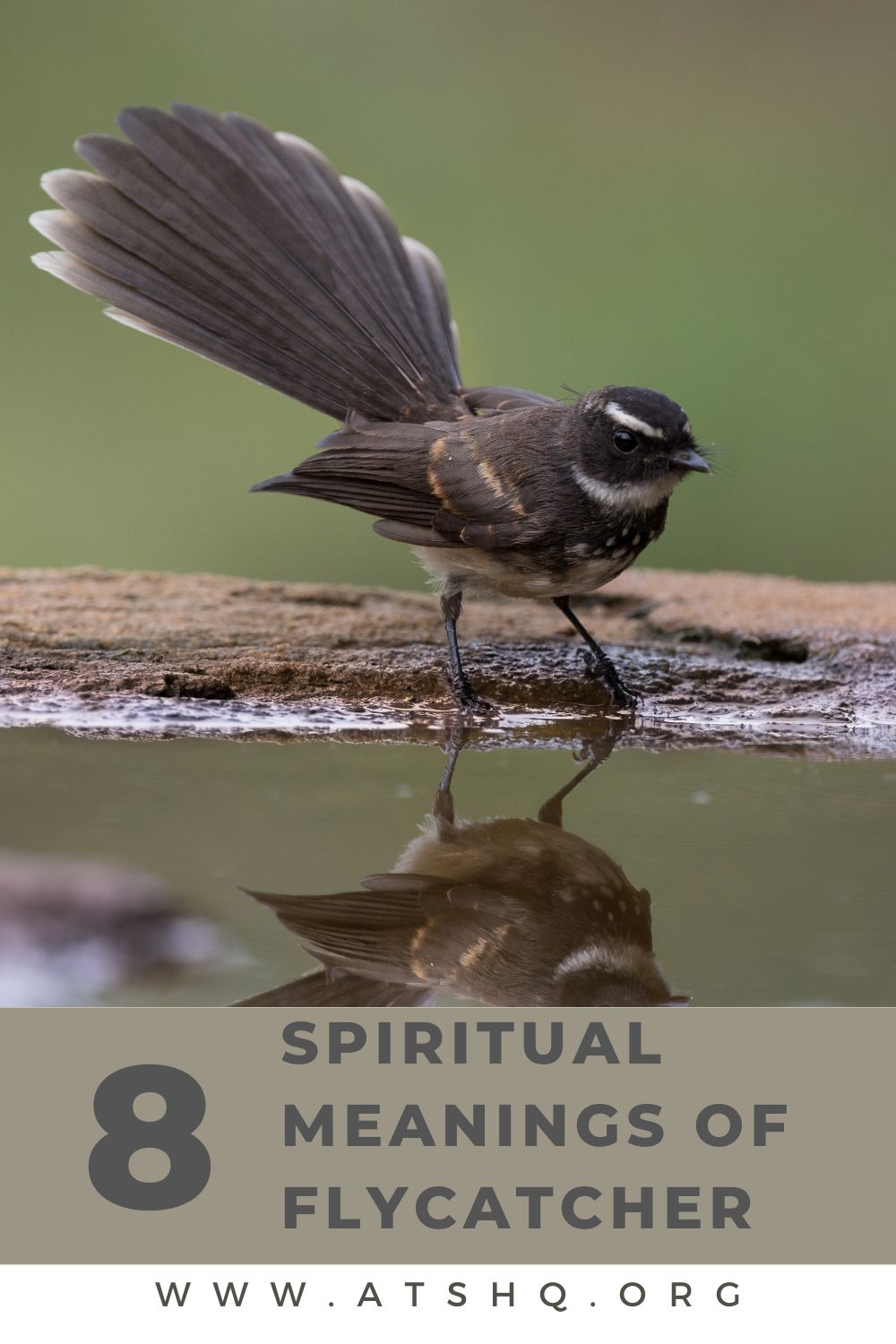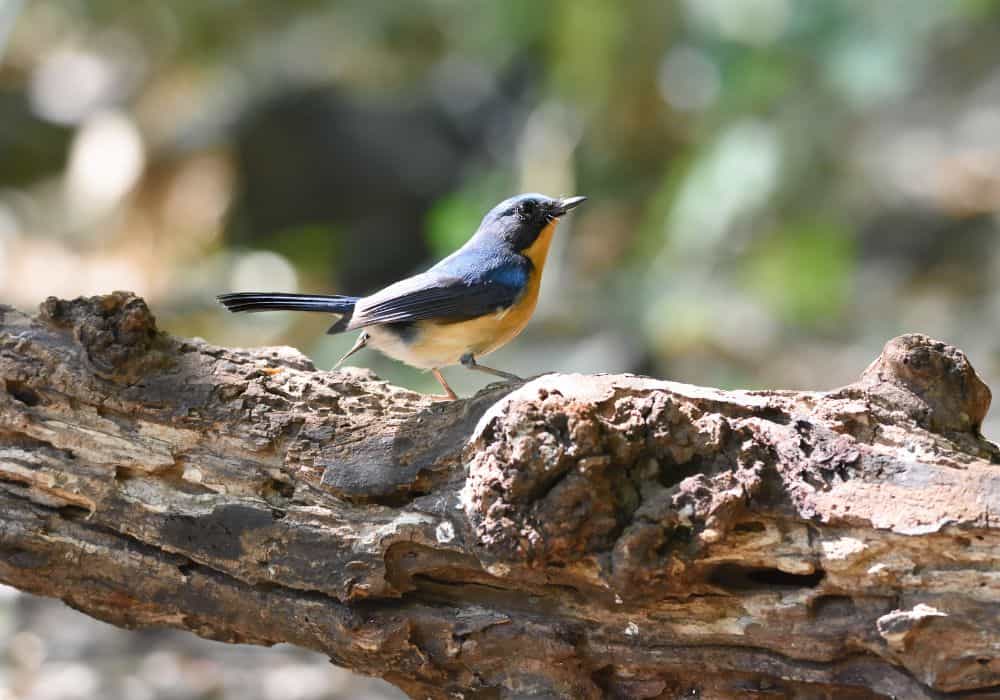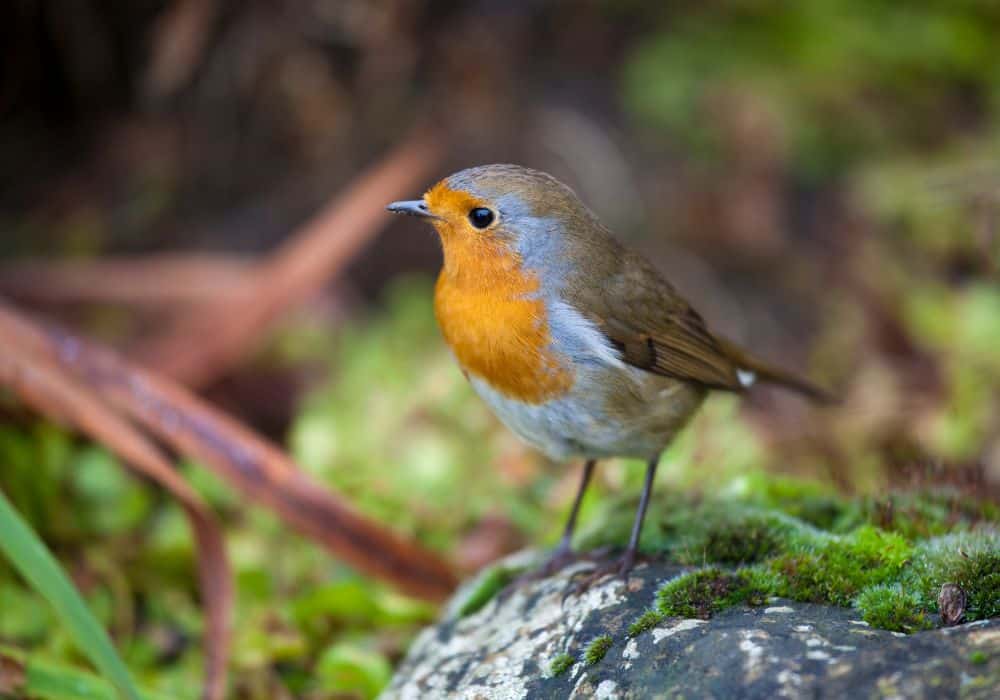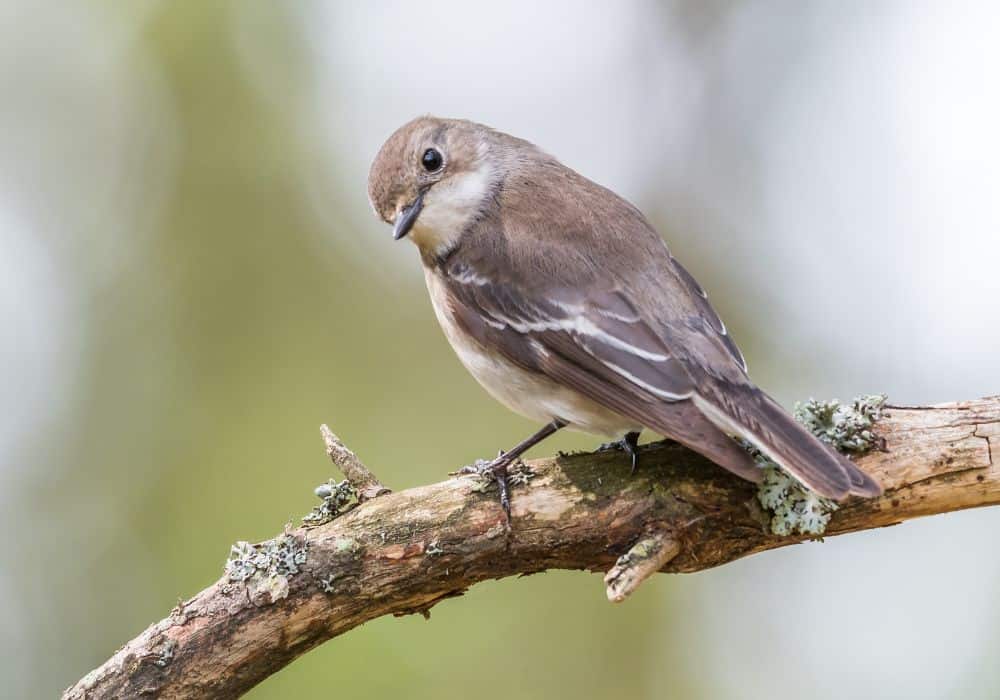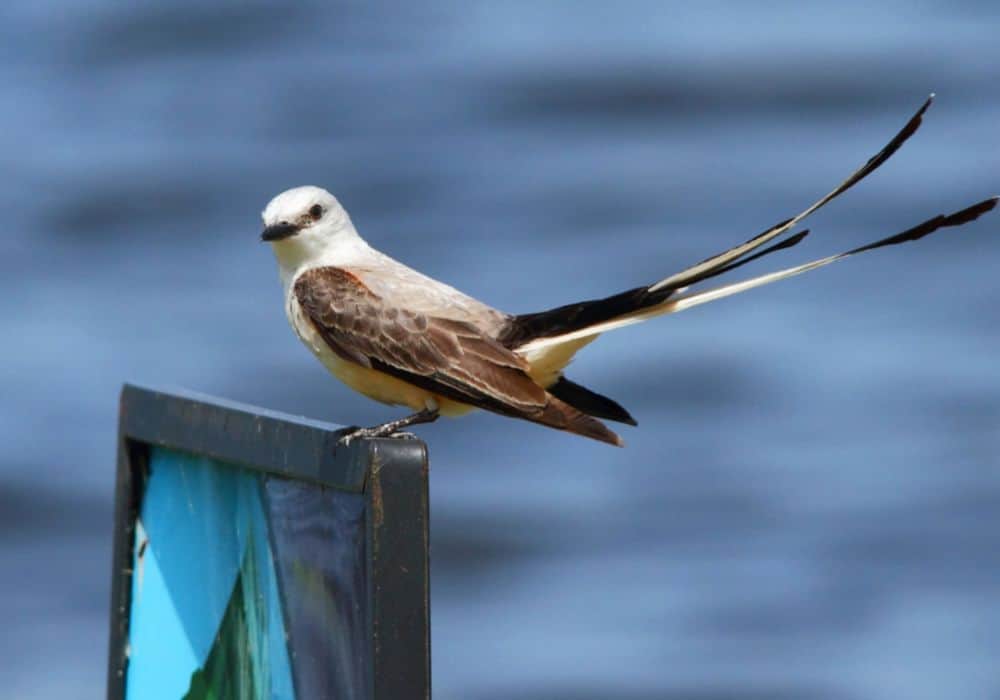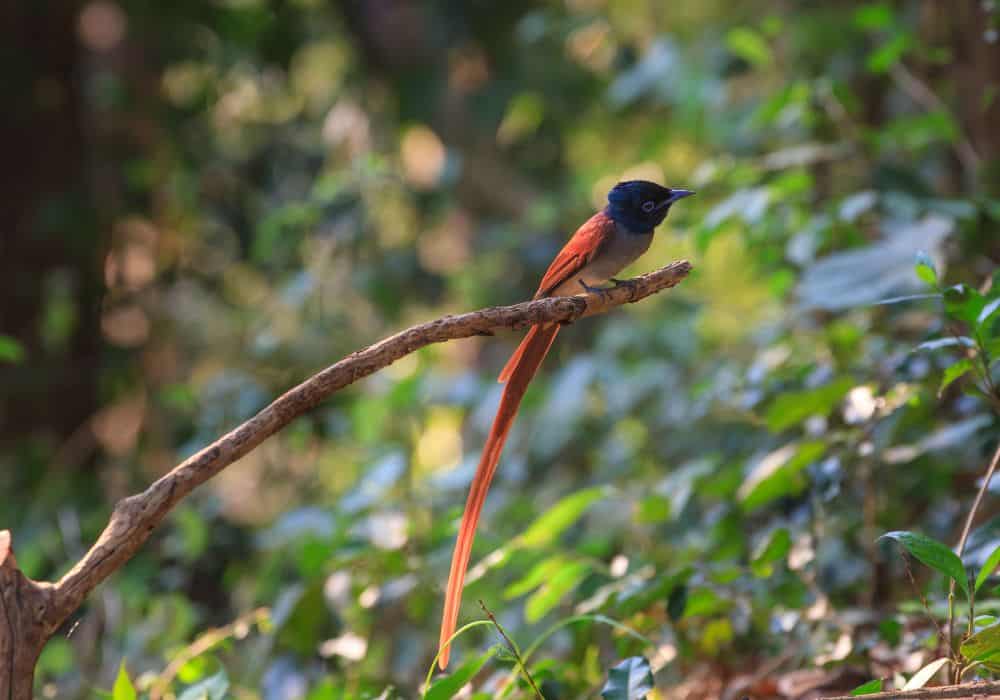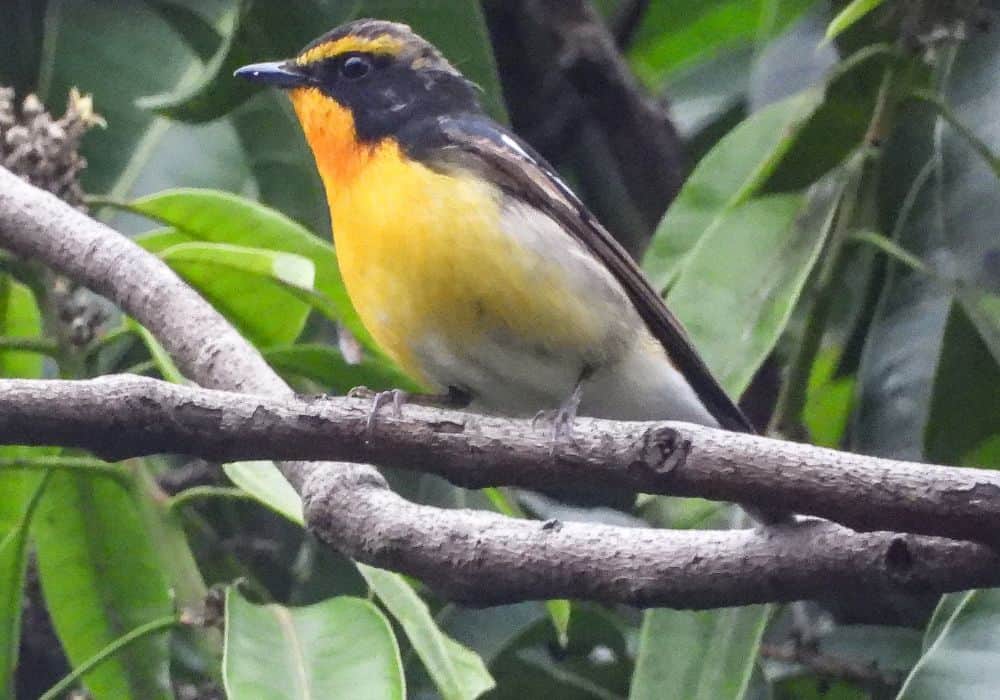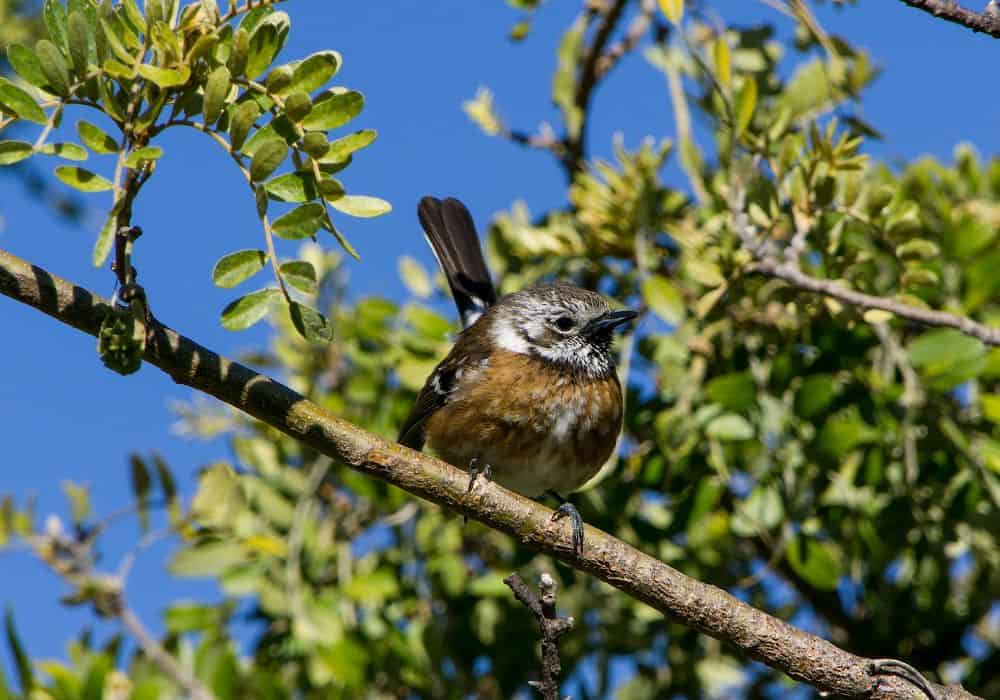To try and confine the otherworldly symbolism of flycatchers to one blog post is like trying to catch all the world’s fish in a butterfly net.
You see, the term ‘flycatcher’ actually encapsulates around 840 different species of bird! Yes, you read that right!
Nevertheless, in this article it’s our goal to explore as much of the world of flycatcher symbolism as possible: from stories of Christian Hell to Hawaiian canoeing, and from the coming of summer to the arrival of winter.
Facts About Flycatchers
There are a couple of traits which all flycatchers share: they are all relatively tiny birds, passerine in anatomy, which prey on insects and catch them mid-air, during flight.
Aside from these specific characteristics, though, there is almost nothing else linking one flycatcher to another. They all look different, prefer different habitats, sing different songs, develop different mating ties and – most importantly for our purposes – symbolize different things!
How to identify a flycatcher?
Identifying a flycatcher depends on a number of different factors, and we highly recommend that you grab yourself a field guide before you go out looking for one. With so many hundreds of different types, it could be quite difficult to find a flycatcher without one!
Some flycatchers are supremely brightly colored, with extravagant plumage (like the male royal flycatcher, for example), whilst others are very plain and dull, and resemble common thrushes, chats, and other similar-looking passerines.
If you’re not too concerned about specifics, however, then there are a few things you can look for when out twitching that should alert you to the presence of some sort of flycatcher:
- A weak song but a harsh, throaty call
- Sharp, agile flight patterns with great flexibility in mid-air
- Relatively small body size, roughly from around 9-22cm from tail to beak
- Hunting of insect prey in-flight
- Catching bugs and insects out of the air
- Generally broad, flattened bills evolved to help them catch their prey as described above
Differences between Old World and New World flycatchers
There are two major families of flycatcher which roughly splits the 840 species down the middle in terms of distribution.
These are the Old World flycatchers and the New World flycatchers, corresponding to Eurasia, Africa, and Australasia for the ‘Old World’ varieties, and to North America, Canada, and South America for the ‘New World’ varieties.
Old World flycatchers fall into the biological family Muscicapidae, whilst New World flycatchers are of the family Tyrannidae, which is more colloquially known as ‘tyrant flycatchers’.
Interestingly, despite the similarities in the names, New World flycatchers and Old World flycatchers are not quite as closely related as you might think. Instead, they have been grouped together because they enjoy similar traits such as their hunting methods, size, and primary diet.
Common and Rare types of flycatcher species
Below is a list of some flycatcher species. Included are the flycatchers which we’ll be discussing in greater detail below as flycatcher totem symbols, mythological creatures, and bearers of omens.
Common (and rare) flycatchers:
- European robin
- Angolan cave chat
- Forest robin
- White-starred robin
- Bagobo babbler
- Gould’s shortwing
- Nightingale
- Forktail
- Cliff chat
- Wheatear
- Stonechat
- Chat
- Redstart
- Gray-headed piprite
- Rough-legged tyrannulet
- Jamaican eleania
- Suiriri suiriri
- Ash-breasted tit-tyrant
- Amazonian inezia
- Olive-chested flycatcher
- Many-colored rush-tyrant
- Northern bentbill
- Buff-cheeked tody-flycatcher
- Russet-winged spadebill
- Vermilion flycatcher
- Drab water tyrant
- Spectacled tyrant
The Meaning of Flycatchers: Totem Animal, Mythology, Spiritual Meaning
When it comes to the meaning of flycatchers, we immediately encounter an issue For example, you have the symbolism of red birds, such as that attached to red cardinals, the scarlet ibis, crimson finches, crimson sunbirds, songbirds like summer tanagers or to scarlet macaws. This red bird symbolism would naturally be applicable to some flycatchers, such as the vermilion flycatcher or indeed the European robin with its red color breast.
But then, what the brilliant red plumage of these particular birds symbolizes has absolutely no bearing on what the long, silken tail of the Asian paradise flycatcher means to Japan, nor what the yellow Narcissus flycatcher symbolized to Ancient Greeks!
Thus, in this section – in which we examine the overarching meaning of flycatchers to humankind throughout history – we will be merely dipping our proverbial toes into the waters of flycatcher symbolism.
Nevertheless, we have prepared a number of different stories, myths and meanings for you to digest. Symbolism which we hope will start you off on your own journey of exploration into what a specific species of flycatcher – perhaps local to you – might mean to you and your family.
Happy reading!
1. Scottish Folklore
In the traditional folklore of Scotland and its islands, there is one migratory bird in the flycatcher diaspora which features prominently and often. The European robin (not a relative of the American robin) is a symbol of courage and perseverance.
According to tradition, the Scots tell the story of how the robin got its red breast. They say that each day, the robin takes a single drop of water in its beak and swoops down toward the fiery realm of Hell. There, it uses the drop of water to quell the flames of the Underworld, burning its chest feathers red in the process.
Exactly why the robin has come to be associated as a sort of angel warrior bent on extinguishing hellfire is not known, but it is clear that this doughty flycatcher has come to represent patience as well as bravery to the Scots.
2. Norse Mythology
The robin is one of the most emblematic of all Old World flycatchers, featuring in mythologies from the Celts and ancient Christians to the Old Norse. In Norse mythology, for example, robins feature widely.
It might seem a little surprising for such a small being to be so highly regarded, but think a while on the nature of the European robin. Its song is marvellous, and often sang directly at eye-level or overhead, usually from the very tops of trees and hedgerows.
Not only is is a bold bird with a tendency toward outward passion, its red breast also makes it one of the few distinctive features in the snowy landscapes of European winter.
It is perhaps for this very reason that the old Vikings and Norsemen of Scandinavia associated the robin with storms and lightning as a protector. After all, if the tiny red-breast could withstand the storm, then surely humans could too. Its red color may even have been like a beacon to Norse during a storm.
It is also clear that to harm a robin in Viking times was interpreted as a direct assault on Thor, the god of thunder, and as such was a punishable offense.
3. Human and Flycatchers
It’s evident that fly catchers have come to symbolise many different things to many different groups of people throughout history. But why should such a diverse group of birds – many of whom are mute-colored and relatively indistinguishable from the next – become so lauded in human culture?
I have a theory. I believe that the very predatory act for which they’re named (catching flies) may have instinctively indicated to prehistoric humans the importance of these birds. After all, whilst flies naturally have their place in the ecological order of things, they are also a nuisance to humans. They eat and spoil food, bite and sting us, pester and frustrate us.
Any animal which was observed reducing the overall fly population around human settlements would, therefore, surely come to represent health, wellbeing, and protection, as so many flycatchers have done.
4. Native American Symbolism
In Choctaw legend, the scissor-tailed flycatcher was one of just two birds to survive a great mythical flood, known as the “Returning Waters”. In this legend, the scissortail flycatcher and a woodpecker had the ingenuity to fly up high, high above the churning floodwaters. In fact, they were forced to cling to the very sky itself in order to survive.
As they did, their tails drooped down and were caught in the flood, rendering them split into the scissor shape for which the flycatcher was named. When the floodwater finally receded, the woodpecker and flycatcher descended to earth, there to be heralded as animals of extreme cunning, good luck, courage and perseverance (just like the European robin).
5 . Hinduism and Flycatchers
The Asian paradise flycatcher has a long, lustrous tail of beautiful colors and striking texture. But according to Hindu mythology, it wasn’t always this way. In Hinduism, a story is told in which the Lord God Vishnu came into a spot of trouble when attempting to subdue the demonic father of a young boy.
The demon cast Vishnu in flames, which greatly endangered the deity. Thankfully, at the last moment, a flock of flycatchers surrounded Vishnu and used their wings to blow out the flames. Saved by these selfless little birds, Vishnu awarded them with beautiful tail feathers as thanks.
To Hindi Indians, therefore, the paradise flycatcher’s beauty symbolises the bountiful rewards to hard work and selfless actions.
6. Ancient Greek Mythology
Flycatchers caught the attention of the ancient Greeks as well, so much so that they named two species of them after mythical characters from their panoply of gods.
One flycatcher with brilliant yellow plumage they named after the character of Narcissus, so vain and self-concerned with his own beauty that he died staring into his own reflection, mourning the fact that he could never be with himself. The Narcissus flycatcher was to the Greeks the symbol of Narcissus – a living reminder that whilst beauty is admirable, vanity can be fatal.
In another stroke of Greek deific naming convention, the ancients gave the moniker of Calliope to the ruby-throated flycatcher. Calliope was the eldest and “Chief of all” the Muses – artistic goddesses who provided inspiration to mortals.
In her case, Calliope was the goddess of epic poetry, said to have a most beautiful and harmonic voice. The ruby-throated flycatcher must have sung a song which to the ancient Greeks symbolised a perfectly balanced harmony, for them to be reminded of sweet Calliope.
7. Japanese Flycatcher Symbolism
A black-blue Mohican and extravagant quill-like tail sets of the pearlescent aquamarine eyes of the Japanese paradise flycatcher: a most exquisite-looking bird which the Japanese lovingly call “sankocho”. Sankocho means “three lights bird”, and is named for its arrival at the start of Japan’s summer, following a migratory period further west and south, in China and South-East Asia.
Many cultures have animals (often birds) which for them represent the arrival or departure of the seasons, but few are quite as spectacular or unmistakable as the Japanese paradise flycatcher. No wonder the bird was awarded with such a charming name and symbol.
8. The Hawaiian Flycatcher Goddess
Hawaii was first settled by fiercely brave Polynesian sailors and canoe-builders, which is why it should come as no surprise that one of their most benevolent and respected deities is the goddess Lea.
Lea is responsible for the blessing of and building of canoes in Hawaiian culture, but she doesn’t appear to Hawaiians in human form. Instead, Lea chooses to take on the shape of a rare flycatcher of the Monarch family, called an ʻElepaio’.
The sighting of an ‘elepaio in Hawaiian culture symbolises a direct visitation from the goddess of canoes herself. Depending on the place and way in which this small flycatcher appears, it can signify that a specific tree would or would not make a good foundation for a canoe-builder’s next project.
‘Elepaio are curious and nosy little birds, and so would follow Hawaiian canoe-builders through the vegetation as they worked. The Hawaiian’s believe these birds to be messengers of their goddess and protector spirits.
If an ‘elepaio pecked at a fallen or felled tree, then this indicated that the tree was riddled with insects and no longer sturdy enough for canoe-building. If, on the other hand, the little bird was uninterested in a felled tree, it indicated to the Hawaiians that this tree was good.
Such a symbiotic relationship led to the creation of the famous Hawaiian proverb: “Uā ʻelepaio ʻia ka waʻa” (“The canoe is marked out by the ʻelepaio”).
Conclusion
Flycatchers, both Old World and New, come in an infinite variety of shapes and sizes. Thus, they also come with an infinite variety of meanings and symbolisms attached to them. Generally speaking, however, these nifty, precocious and brave little birds have come to symbolise the triumph of the small over the mighty, and survival in the face of adversity. They are largely beloved by all nations who are lucky enough to play host to them.
